Santa Anna and the Texas Revolution
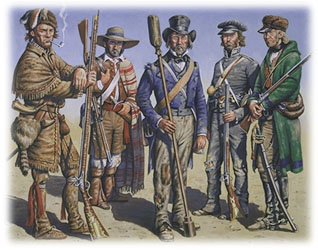
On September 29, 1835, a detachment of the Mexican army arrived in Gonzales, Texas, a Mexican state, to confiscate a cannon
. The cannon was well hidden, but eighteen armed men stood in plain sight. They taunted the Mexicans to "come and take it."
The two sides talked and dickered, but no action was taken. However, the little band of men grew to 167 in two days.
Early the next morning the Texans attacked the Mexican camp believing they were going to attack that day (Lord 38). With this
attack the Texas Revolution was started. It was a revolution that Texas would eventually win. One of the greatest helps
to the Texan cause was Santa Anna, the Mexican president, who provided the cause for revolution, stirred up the Texans' anger
and zeal, and caused the Texans to win the final battle at San Jacinto.
In a sense Santa Anna started the Texas Revolution by repealing the Mexican Constitution of 1824.
In general the Constitution gave considerable rights to the individual Mexican states. It was based on "a federal government
of sovereign states" (Wood). Under this constitution, American settlers in Texas were exempt from any taxes, tariffs, and
government services including defense, so the Texans governed themselves (Wood). They believed the constitution guaranteed
self-government (Lord 32). In 1830, the Mexican congress passed a law saying that no more Americans could immigrate to Texas
and it also allowed for the garrisoning of convict troops to police the area and enforce the laws (Binkley 41). Several
factors led up to this decision. First, the United States repeatedly tried to buy Texas from Mexico, and the Mexicans
were starting to wonder if the settling of Texas was some sort of covert effort to take over Texas (Binkley 5). Second,
according to Lamont Wood, ethnic prejudices were very much alive. All someone had to do was exploit this to start a war
(Wood). Third, many of the American settlers owned and used slaves. However, slavery was outlawed in Texas, but not in the
rest of Mexico where it was not practiced (Wood). Finally, the American settlers tended to settle in the areas around
Gonzales, about 65 east of San Antonio (see map). One reason Mexico opened Texas up for
immigration in the first place was to have
people settle between Mexico and the fierce Comanche Indians who lived in central and northwest Texas thus forming a buffer.
However, the Texans never settled there, and Mexico's expectation went unfulfilled (Wood).
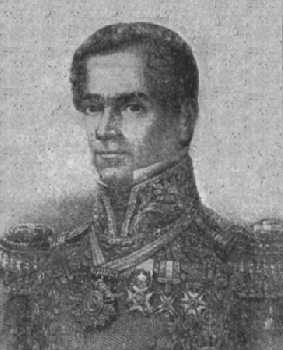
Between 1833 and 1855 the Mexican presidency changed hands at least thirty-six times, and Antonio López de Santa Anna ruled
eleven of those time (People). When he ruled, Santa Anna would often leave the actual job of president to his advisors.
During these various times, the liberal wing of Mexico had tried some reforms that threatened the power of both the army and
clergy. Now the stage was set for a reactionary movement led by those two influential forces. So in May 1834, the army and
clergy persuaded Santa Anna to dissolve both Congress and the state legislatures and declare himself a dictator
(Binkley 41). After all Santa Anna was a vain man who liked applause.

When Santa Anna dissolved the state legislature and brought all the power to himself, Texas found itself working under an
illegal system of government. So, Texas rebelled along with several other Mexican states (Binkley 41). The Texans originally
fought for the Constitution of 1824 but shortly turned to independence. A good illustration of this is the convention which
was organized in October 1835 with orders "to secure peace if it is to be obtained on constitutional terms, and to prepare
for war, if war be inevitable" (Binkley 60). The first real fight started on September 29, 1835 when General Cos of the
Mexican army sent some men to take a cannon from Gonzales. There was a stand off which ended in a skirmish. The Mexicans ran
back to San Antonio without the cannon (Lord 38). The Texas revolution had started. The Texans followed the Mexicans to San
Antonio and the Alamo where the Texans forced General Cos to surrender and leave Texas. Texas now was in control of the
Alamo (Lord 56).
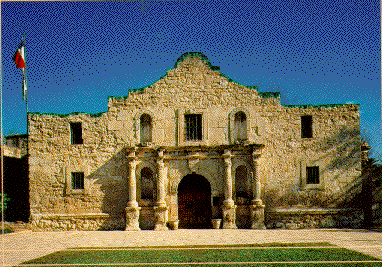 The Alamo was an old Spanish mission in San
Antonio in central Texas. It had served as a military garrison for the Spanish,
Mexicans, and Texans. After the Texans chased General Cos out of Texas, they used the Alamo as a fort. Santa Anna decreed
that "all foreigners who might be caught under arms on Mexican soil should be treated as pirates and shot" (Binkley 97).
This was an effort to scare everyone from fighting especially since foreigners made up most of the Texan army .
The Alamo was an old Spanish mission in San
Antonio in central Texas. It had served as a military garrison for the Spanish,
Mexicans, and Texans. After the Texans chased General Cos out of Texas, they used the Alamo as a fort. Santa Anna decreed
that "all foreigners who might be caught under arms on Mexican soil should be treated as pirates and shot" (Binkley 97).
This was an effort to scare everyone from fighting especially since foreigners made up most of the Texan army .
At this time when Santa Anna marched into Texas in February 1836, he attacked the Alamo. On March 6, 1836 the Alamo fell
after a thirteen day siege causing every man in the fort to be either killed or wounded (Wood). The six wounded men who
survived the assault were captured, and Santa Anna had them executed on the spot (Wood). His "take-no-prisoners" policy was
initialized.
The way in which the Alamo was defeated raised the defenders to legendary status. It is probably the most well known event in Texas history. Several movies have been made about the defeat. Also the Alamo inspired the writing of the Ballad of the Alamo which was recorded by Marty Robbins.
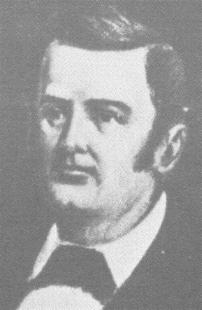 The next move after the Alamo was east to
the fort at Goliad (view a map) under the command of Colonel Fannin. He had spent
all winter fortifying his command and preparing for war; however, when the Alamo called for help Fannin refused. Then when
Santa Anna came to Goliad, Fannin packed up, and he and his men retreated east toward the US boarder. They remembered
everything except food. A few hours later, the Mexican army caught up and quickly surrounded Fannin's command. After a short
fight, Fannin surrendered. He and his men were marched back to Goliad and, a week later, were led out into a field and shot
(O'Connor). Three other divisions of the Texas army were also executed by the Mexicans: one in San Patricio and two that
returned to Goliad after the surrender (O'Connor).
The next move after the Alamo was east to
the fort at Goliad (view a map) under the command of Colonel Fannin. He had spent
all winter fortifying his command and preparing for war; however, when the Alamo called for help Fannin refused. Then when
Santa Anna came to Goliad, Fannin packed up, and he and his men retreated east toward the US boarder. They remembered
everything except food. A few hours later, the Mexican army caught up and quickly surrounded Fannin's command. After a short
fight, Fannin surrendered. He and his men were marched back to Goliad and, a week later, were led out into a field and shot
(O'Connor). Three other divisions of the Texas army were also executed by the Mexicans: one in San Patricio and two that
returned to Goliad after the surrender (O'Connor).
At first Santa Anna's policy of execution carried the desired effect; all the Texans ran toward the American border
(see map). However,
his policy backfired. All the weak hearted Texan soldiers quit the army leaving only the hard core men. They were staunch
men who were "blazing, fighting mad" (Lord 191). The way the Alamo was destroyed also caused the remaining Texan army to be
even more determined. They had let the Alamo down by not sending reinforcements. They would not let her down again
(Lord 191). The next meeting with Santa Anna would prove a different outcome.
The next battle was on an island in a bayou next to the San Jacinto River about halfway between San Antonio and the Louisiana
border. Santa Anna lost this battle simply by stupidity. On April 20, 1836, Colonel Sidney Sherman, commander of the Texan
cavalry, skirmished with the Mexican army still led by Santa Anna (Kemp). Nothing was accomplished except inspire the Texans
for the next day. The Mexicans followed the Texas army across Vince's bridge which the Texans promptly cut down thus cutting
off their only way of escape (Battle). The next day, April 21, showed no sign of Texan activity, so Santa Anna ordered the
soldiers to stack the guns and get some sleep. The cavalry also dismounted and ate lunch (Lord 195).
At four o'clock in the afternoon, while the Mexican camp slept, the Texan army opened fire with their two six-pound cannons.
The entire Texan line surged forward shouting "Remember the Alamo!" "Remember Goliad!" (Kemp). The fighting was extremely
intense. The Texans were driven by their anger for the way Santa Anna had killed everyone he captured. They were so
mad that General Houston, commander of the Texan army, did not want the Tejanos, Mexicans who sided with the Texans, to
fight because he feared that the Texans would not distinguish between friend and foe during the battle. The Tejanos wanted
to fight and went into battle wearing cardboard signs in their hats to show that they were on the Texan side (Marks). In
the eighteen minutes of battle, the Mexican camp was turned into a blood bath. All the Mexican soldiers could do was
drop on their knees and shout, "Me no Alamo! Me no Goliad!" (Kemp). Seven hundred Mexicans were killed and another 730
taken prisoner (Battle), and no Mexicans escaped off the island.
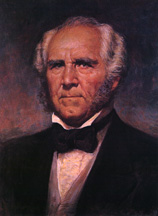 Santa Anna disappeared during the
battle, so the next day General Houston ordered a thorough search of the island. During
the search, a Texan named Sylvester caught a Mexican dressed as a common soldier trying to escape. When the Mexican was
brought back to camp the other Mexican prisoners shouted, "El Presidente!" thus betraying Santa Anna's identity (Kemp).
Santa Anna surrendered to General Houston, and agreed to grant Texas independence (Binkley 109). Texas was free.
Santa Anna disappeared during the
battle, so the next day General Houston ordered a thorough search of the island. During
the search, a Texan named Sylvester caught a Mexican dressed as a common soldier trying to escape. When the Mexican was
brought back to camp the other Mexican prisoners shouted, "El Presidente!" thus betraying Santa Anna's identity (Kemp).
Santa Anna surrendered to General Houston, and agreed to grant Texas independence (Binkley 109). Texas was free.
If only Santa Anna had not repealed the Constitution of 1824. If only Santa Anna had not dissolved the legislatures. If
only Santa Anna had not killed every Texan prisoner. If only Santa Anna had not gone to sleep without posting a guard at
San Jacinto. If only Santa Anna had done any of these things Texas would probably still be a Mexican state; however, Santa
Anna did none of these things. In fact it was his failure to do any of these things that caused Texas to become an
independent republic.
Works Cited
Back to Texas
rwright@andrews.edu
Richard Wright Copyright 1999
 The Alamo was an old Spanish mission in San
Antonio in central Texas. It had served as a military garrison for the Spanish,
Mexicans, and Texans. After the Texans chased General Cos out of Texas, they used the Alamo as a fort. Santa Anna decreed
that "all foreigners who might be caught under arms on Mexican soil should be treated as pirates and shot" (Binkley 97).
This was an effort to scare everyone from fighting especially since foreigners made up most of the Texan army .
The Alamo was an old Spanish mission in San
Antonio in central Texas. It had served as a military garrison for the Spanish,
Mexicans, and Texans. After the Texans chased General Cos out of Texas, they used the Alamo as a fort. Santa Anna decreed
that "all foreigners who might be caught under arms on Mexican soil should be treated as pirates and shot" (Binkley 97).
This was an effort to scare everyone from fighting especially since foreigners made up most of the Texan army .


 The next move after the Alamo was east to
the fort at Goliad (
The next move after the Alamo was east to
the fort at Goliad ( Santa Anna disappeared during the
battle, so the next day General Houston ordered a thorough search of the island. During
the search, a Texan named Sylvester caught a Mexican dressed as a common soldier trying to escape. When the Mexican was
brought back to camp the other Mexican prisoners shouted, "El Presidente!" thus betraying Santa Anna's identity (Kemp).
Santa Anna surrendered to General Houston, and agreed to grant Texas independence (Binkley 109). Texas was free.
Santa Anna disappeared during the
battle, so the next day General Houston ordered a thorough search of the island. During
the search, a Texan named Sylvester caught a Mexican dressed as a common soldier trying to escape. When the Mexican was
brought back to camp the other Mexican prisoners shouted, "El Presidente!" thus betraying Santa Anna's identity (Kemp).
Santa Anna surrendered to General Houston, and agreed to grant Texas independence (Binkley 109). Texas was free.